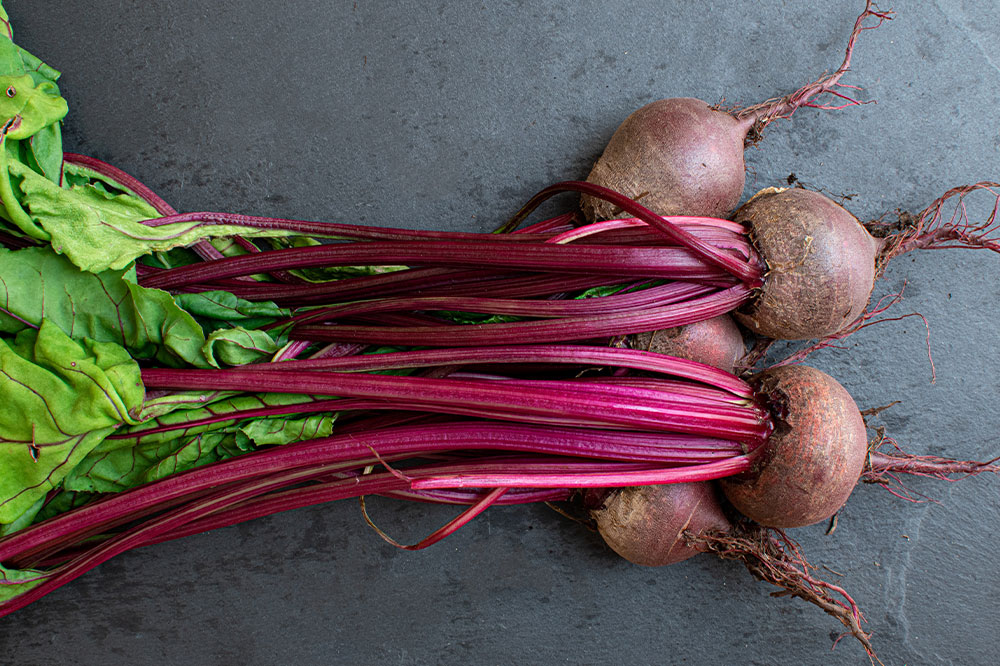5 nourishing foods that strengthen lungs

It is crucial to keep the lungs healthy in order to prevent the onset and escalation of serious conditions. There is a possibility that harmful toxins in the environment and consumption of inflammatory foods can lead to ailments such as chronic MAC infection, chronic obstructive pulmonary disease (COPD), and pulmonary fibrosis. Altering lifestyles and eating a nutrient-rich food regime can boost lung health. Here are five foods that can improve the function of the lungs.
Beetroots and beet greens
Beetroots are beneficial for the lungs, as they contain nitrates that relax blood vessels, decrease blood pressure, and improve oxygen levels in the body. On the other hand, beet greens are rich in magnesium and potassium, both minerals that boost lung health and help manage chronic MAC disease.
Apples
Apples, filled with beneficial flavonoids and a phytonutrient called quercetin, have always been known to keep doctors at bay. This fruit also contains phytochemicals that help keep your lungs healthy and your throat passageways clear. Apples contain all the good antioxidants that prevent chronic ailments.
Ginger
This immunity booster is an age-old remedy that helps keep the respiratory system healthy. Ginger is an anti-inflammatory spice and relaxes muscles of the lung tissue. A cup of ginger tea after your last meal aids digestion too.
Bananas
Bananas strengthen the heart and prevent oxidative damage of cells caused by free radicals. It is loaded with potassium and fibers that help promote lung function. Bananas are one of the fruits that people of all ages can consume.
Tomatoes
Lycopene is a carotenoid antioxidant that improves lung health, and tomatoes are full of them. They help in reducing inflammation of the airways in patients with asthma. Tomatoes boost immunity, too, as they are rich in potassium and vitamin C.
In patients with severe lung conditions, doctors may recommend a change in lifestyle and antibiotics like Esbriet.
Esbriet®
Esbreit is used to treat IPF (Idiopathic pulmonary fibrosis), a type of pulmonary fibrosis that causes scarring or hardening of the lungs. This antibiotic contains anti-inflammatory, antioxidant, and antifibrotic properties that improve the function of the lungs and reduce the severity of IPF.
Tezepelumab
This is an investigational, potential first-in-class medicine funded by AstraZeneca and Amgen. Tezepelumab is known to reduce annualized asthma exacerbation rate (AAER) in severe asthmatic patients.
Zyrtec®
Zyrtec® contains antihistamines that can relieve severe allergy symptoms. Each tablet contains 10 mg of Cetirizine HCL, which protects the body from allergens both indoors and outdoors for about 24 hours. Zyrtec® tablets are effective against asthma symptoms as they can help relieve the itchiness of the nose or throat. Cetirizine HCL tablets can also help relieve symptoms including a runny nose, watery eyes, and sneezing.
Air purifiers are technologically advanced devices that help rid the indoor air of pollutants and allergens. Installing an air purifier can help with improving lung health. Some types of air purifiers may even help in eliminating odor from your rooms. HEPA filter air purifiers are capable of removing up to 99.7% of particulate matter present in the air. Some of the most recommended brands of HEPA filters include Hamilton Beach, Honeywell, GermGuardian, and Philips.
Asthma is covered under Medicare Part A in case someone requires hospital care for an asthma attack. The condition is also covered under standard health insurance policies and may cover hospitalization costs, diagnostic tests, among other costs. It is best to check with the respective insurance policy provider to understand the terms and conditions.
People with eosinophilic esophagitis might also have a weaker pair of lungs. It is a condition in which eosinophils are found in the esophagus and can cause difficulty in breathing. If left untreated, it can also be a cause of eosinophilic asthma and other lung-related complications. ARIKAYCE® is a treatment option prescribed to people with compromised lung health. It is an anti-eosinophil compound and is especially prescribed to people that continually test positive for MAC lung disease.







